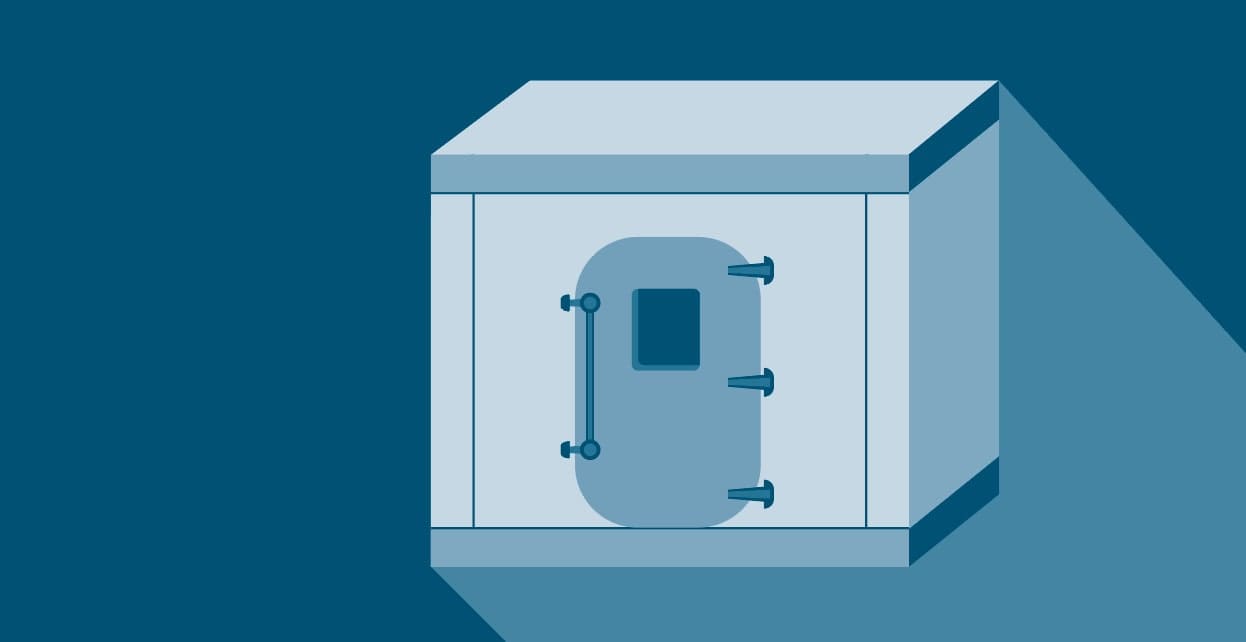
The basic principles of freezing food to preserve its freshness have not changed since the first gas freezer was invented in 1857, but fortunately the technology has evolved to become much more efficient, less polluting and more diverse in its range of applications.
Though it took many decades for the deep freeze to become ubiquitous in commercial foodservice and homes, it soon began to adapt quickly to the needs of its users. For a time, big walk-in freezers became popular. Having a large store of frozen ingredients that could be conveniently accessed made sense, but the modern kitchen demands smaller, more compact and more efficient technology.
“It is hard to reinvent the freezer, but maybe in the future there will be smaller units to ensure there is no unused space,” says Helge Peter Pahlke FCSI, managing partner of German consultancy KDREI.
“Space is a big issue. We really minimize the cold rooms in our plans in order to make best use of space.”
“We are trying to shrink these pieces of equipment,” says Jay Bandy FCSI, president of Goliath Consulting Group in the US. “Kitchen footprints are getting smaller, so we don’t see the big walk-ins so much now. Kitchen space on projects is shrinking, storage space is getting smaller, but the good news is that manufacturers have more accessories and customization, even on smaller coolers.”
Easily asccessible
In some instances, smaller freezer units have been incorporated into prep areas, increasing the efficiency of food preparation by ensuring everything is easily accessible. The fast food sector, for instance, needs more innovative design so everything is built into one station. The kind of freezer technology required today often depends heavily on the sector and the place in which a commercial kitchen is operating.
“It really depends on where the kitchen is located,” says Primož Černigoj FCSI of Slovenian consultancy PROprima. “In London, Ljubljana or Munich, where delivery can happen one day in advance, then you can use a smaller space for a freezer. However, if it is in a large kitchen making thousands of meals per day then you still need a lot of freezer and cold storage space, and if you are in a less accessible location, like a ski resort, where you can’t get deliveries every day, then you also need a bigger freezer.”
According to Pamela Eaton FCSI of US consultancy NGAssociates Foodservice Consultants, constraints on space are also pushing freezer technology to become more multifunctional.
“A smaller footprint is pushing cold equipment to expand into heating functions – hot holding and retherm being the most common,” she says.
“On-premise production of gelato, ice cream and other frozen novelties also allows for differentiation and ways to attract attention.”
A hotbed of innovation Within the freezer segment, the biggest innovations in the last 10 years have been the blast-chilling and shock-freezing side of the refrigeration sector, with new requirements for HACCP regulations in regard to how long you have to chill products and shock-freeze them for long-term storage.
“These are still relatively new to the American market,” says Jason Duncan, software engineer at manufacturer American Panel. “We started seeing those in 2006 and we were among the first to make them, and it has grown exponentially year on year. They bring increased food quality and food safety, and you can manage production a lot better and make better use of employees’ time, saving considerably on labor cost.”

Remote monitoring and control
For Kevin Wilson, director of engineering and R&D at US manufacturer Polar King International, it is in the area of remote monitoring and control that the biggest advances have been made.
“There are currently a multitude of controls and monitoring devices for this sector of the market that give end users several options in terms of monitoring, maintaining, and making system parameter changes remotely,” he explains. “In addition, these control options can help to reduce the risk of product loss and ensure product quality to their specifications.
“Then there is automated equipment, driven by the ability to provide high-quality, lower-cost operations in a time that continues to be affected by labor shortages,” he continues. “With controls and monitoring systems, managers and owners are looking for technology to provide higher efficiency and security of their products in storage and throughout preparation and cooking.”
The concept of the connected kitchen extends to all kinds of equipment and is key to improving energy efficiency.
Cookers, for instance, can be remotely monitored and turned off or on to ensure optimal usage, while any signs that a unit is not operating as usual can trigger predictive maintenance that can extend the life of the equipment. Similarly, freezers can be monitored for efficiency and maintenance, but there is also a crucial food safety element.
If a freezer door is left open, for example, an alarm might be triggered to ensure that the temperature of food stored inside does not rise too far.
“Remote monitoring can make a big difference,” says Černigoj. “If you have a lot of fish in your freezer, for example, and your system stops working over the weekend, you can get an alert through the connected kitchen, then you can see the problem and you can save that fish. It can save money, too.
Connected equipment brings a big benefit on the cold side, as well as monitoring temperatures and ensuring equipment is operating more efficiently.”
The rules of the game
One of the key factors that has shaped the design of freezer technology is regulation, which has increasingly focused on energy efficiency and, more recently, other aspects of sustainability, notably the use of polluting refrigerants. Looking back at that first freezer in the mid-1800s, it is easy to see why.
That first model used ammonia and sulfur dioxide to cool the air to below zero inside the machine, but liquid ammonia is highly toxic. Since then, many types of gas have been used, from chlorofluorocarbons (CFCs) to Freons or hydrofluorocarbons (HFC), but a new wave of regulation will see the wider use of gases with lower global warming potential (GWP).
“As the HFC refrigerant phase-down progresses in the next five to 10 years, the phase-in of lower-GWP refrigerants could potentially drive system and component manufacturers to develop more efficient systems to meet the demands of the new refrigerants,” says Wilson.
Similarly, regulations will shape how some freezer equipment can be used in order to ensure food safety, as well as combat pollution.
“Regulations in the market change a lot, and you have the shock freezer/blast chiller side of it and the regulations for both of them as far as temperatures go,” says Duncan. “On the chiller side you also have the environmental side. There is a myriad of different refrigerants that are continuously being examined and looked at going forward.”
“Regulation is one of the drivers of innovation because it ensures you have to move forward,” he adds.
“You have to figure out that next step as opposed to everyone going in their own direction. Regulation keeps everybody moving in the same direction.”
While the phase-in and phase-out of the current HFC refrigerants to lowGWP refrigerants will probably be the biggest influence on freezer design in the near future, manufacturers will still have to differentiate their equipment, which will result in greater customisation and innovation around appearance, convenience and energy efficiency.
Regulatory drivers are powerful, but meeting the actual needs of the customer – in a time of rising inflation and labor shortages – will require a creative touch.
Jim Banks
